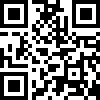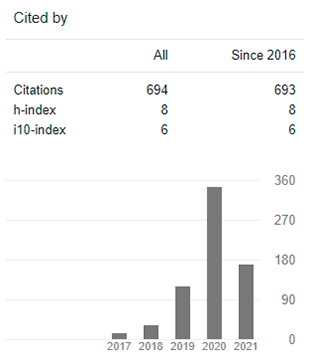Virtual Learning Environments: the challenge of the transition to new forms of teaching
DOI:
https://doi.org/10.29394/Scientific.issn.2542-2987.2022.7.23.17.327-343Keywords:
technology, teacher, teaching, competenciesAbstract
The technological change that manifests itself in an accelerated and sustained way during the last decades has meant the development of various innovations in different spheres of human life, including education. In Mexico, the incorporation of new technologies into the teaching and learning process is a task that is seen to be increasing, and in which there are large areas of opportunity. Although for many years, the use of Information and Communication Technologies (ICT) was conceived as a learning support strategy, today it is considered an urgent means from which the teaching and learning process is carried out. The context of the COVID-19 pandemic demanded the articulation of tools, means, skills and teaching experiences to continue the process of training students through online teaching. This activity represents a challenge in which the prevailing need for teachers to improve their teaching practice to guarantee a quality educational service has been revealed. This essay describes this scenario in which Virtual Learning Environments are used as a means for the transition to new ways of teaching and learning.
Downloads
References
Andrade-Lotero, L. (2012). Teoría de la carga cognitiva, diseño multimedia y aprendizaje: un estado del arte. Magis. Revista Internacional de Investigación en Educación, 5(10), 75-92, e-ISSN: 2027-1174. Recuperado de: https://www.redalyc.org/articulo.oa?id=281024896005
Delors, J. (1996). La educación encierra un tesoro. Informe a la UNESCO de la Comisión Internacional sobre la educación para el siglo XXI. ISBN: 84-294-4978-7. Madrid, España: Grupo Santillana de Ediciones.
García, V., García, E., Zambrano, M., & López, C. (2020). Criterios de calidad para entornos virtuales de aprendizaje una revisión documental. Suplemento CICA Multidisciplinario, 4(09), 90-103, e-ISSN: 2631-2832. Recuperado de: https://suplementocica.uleam.edu.ec/index.php/SuplementoCICA/article/view/78
INTEF (2017). Marco Común de Competencia Digital Docente Octubre 2017. España: Instituto Nacional de Tecnologías Educativas y Formación del Profesorado.
Rincón, M. (2008). Los entornos virtuales como herramientas de asesoría académica en la modalidad a distancia. Revista Virtual Universidad Católica del Norte, (25), 1-19, e-ISSN: 0124-5821. Recuperado de: https://revistavirtual.ucn.edu.co/index.php/RevistaUCN/article/view/126
Salica, M. (2019). Carga cognitiva y aprendizaje con TIC: Estudio empírico en estudiantes de química y física de secundaria. TE & ET: Revista Iberoamericana de Tecnología en Educación y Educación en Tecnología, (24), 67-78, e-ISSN: 1850-9959. Recuperado de: https://doi.org/10.24215/18509959.24.e08
Suárez, C. (2003). Los entornos virtuales de aprendizaje como instrumento de mediación. Education in the Knowledge Society, 4(1), 1-9, e-ISSN: 2444-8729. Recuperado de: https://doi.org/10.14201/eks.14342
UNES (2021). Panel de expertos: Experiencias de formación e investigación en línea. Tercer Coloquio de investigación y posgrado. España: Universidad España.
UNESCO (2008). Estándares de competencias en tic para docentes. Londres, Inglaterra: Organización de las Naciones Unidas para la Educación, la Ciencia y la Cultura.
Downloads
Published
How to Cite
Issue
Section
License
Copyright (c) 2022 INDTEC, C.A.

This work is licensed under a Creative Commons Attribution-NonCommercial-ShareAlike 4.0 International License.
The content of the journals of this site, are under a Creative Commons Attribution-Noncommercial-Share Alike 4.0 International License.













